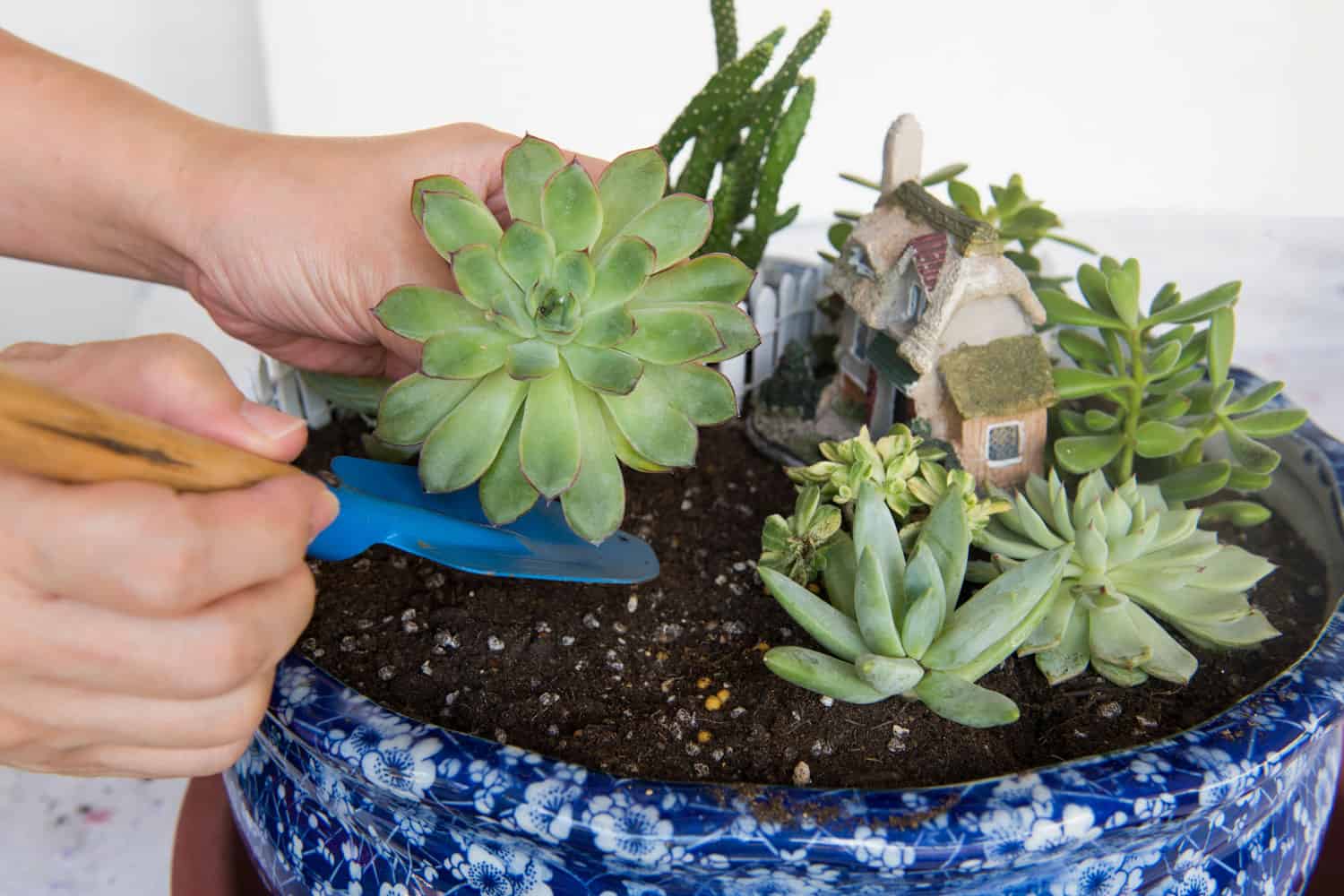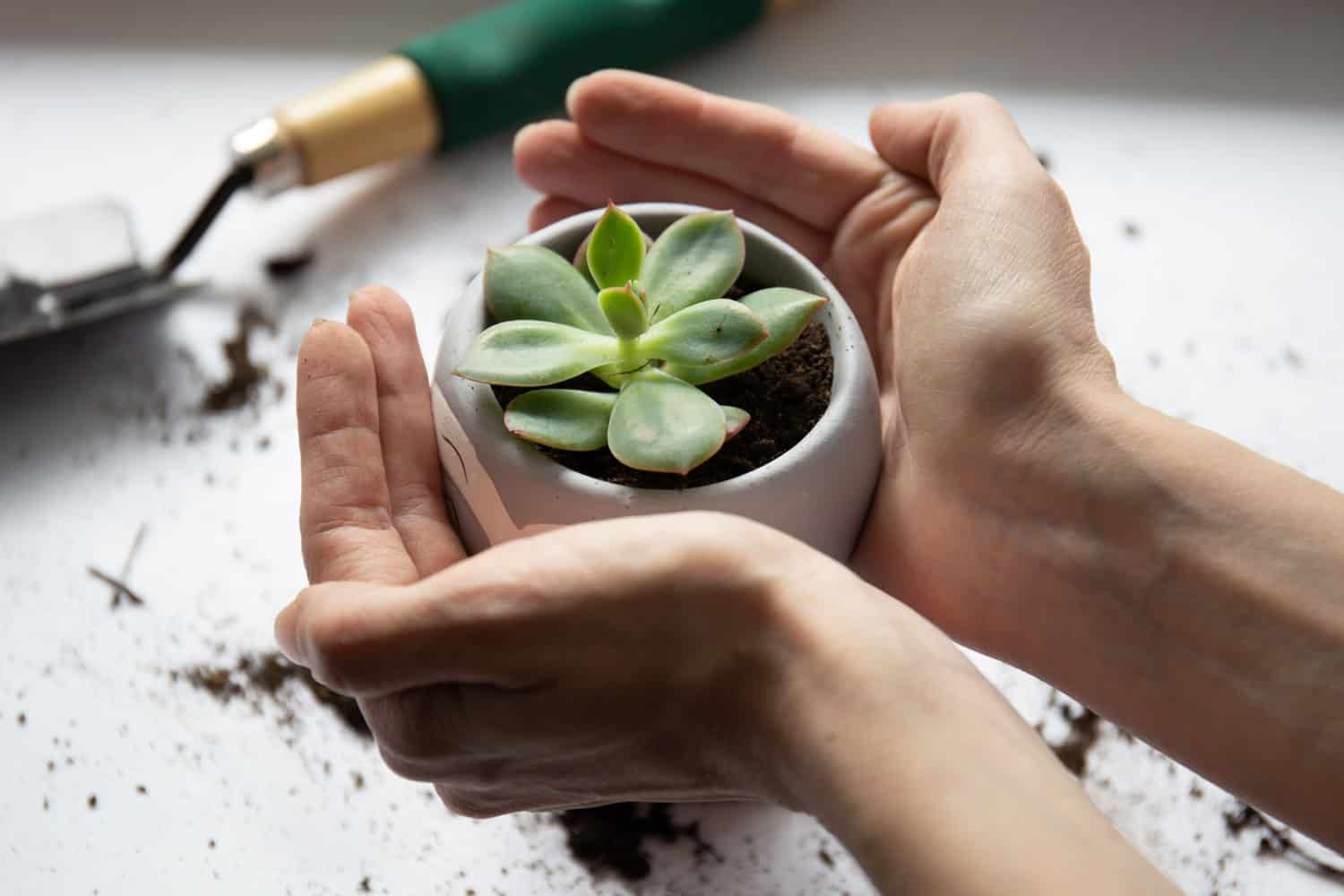Dry desert? Humid tropics? Frosty mornings? No problem! Master the art of nurturing succulents and watch your garden or home bloom with style.
Succulents are the perfect plants for anyone wanting to add a splash of green to their space with minimal fuss.

These tough little plants are not just resilient; they also bring a trendy touch to your home or garden.
However, don't let their simplicity fool you - different climates throw unique challenges their way.
Facing dry heat, intense humidity, or chilly frosts? Don't worry! This guide will show you how to nurture these hardy beauties, significantly boosting your succulent survival skills.
1. Understand Your Climate
Knowing the details of your local climate is crucial when growing succulents.
They thrive in specific conditions, and understanding these can be the difference between a flourishing garden and a struggling one.
Identifying Climate Zone
To successfully grow succulents, you need to identify your climate zone.
Climate zones are categorized by temperature ranges and conditions that are typical for those areas.
You can find your zone by checking with local agricultural extensions or using online USDA Hardiness Zone maps.
Knowing your zone helps determine which succulent species will thrive in your outdoor garden.
Assessing Seasonal Variations
Apart from knowing your zone, pay attention to the seasonal variations in your area.
Climates can shift drastically with the seasons, affecting how you care for your succulents.
You might have to shelter them during cold winters or provide shade in intense summer heat.
Track local precipitation levels, temperature ranges, and humidity, as these all have direct impacts on plant health and water needs.
2. Selecting the Right Succulent Species
When growing succulents, it's important to choose species that will thrive in your specific climate.
Consider the adaptability and hardiness of each species, as well as local varieties that are already acclimated to your environment.
Adaptability and Hardiness
Succulents vary widely in their ability to adapt to different climates. Some can withstand extreme heat, while others are better suited to cooler temperatures.
For example, the Sempervivum tectorum, commonly known as hens-and-chicks, is known for its hardiness and can survive in colder climates with freezing temperatures.
On the other hand, a succulent like the Echeveria elegans, prefers warmer conditions and may require indoor protection if temperatures drop too low.
- Heat-tolerant succulents: These often have thicker leaves and can withstand full sun exposure.
- Cold-hardy succulents: Look for species that can tolerate frost, often ones that have a dormancy period during winter.
Learning About Local Species
Investigate local succulent species that are naturally suited to your region’s climate.
Many areas have native succulents that have evolved to survive local conditions and will often require less care than non-native species.
For example, in the deserts of the Southwest, the Agave and Opuntia species are well-adapted to hot, arid environments.
In contrast, the Sedum species found in cooler northern climates are adept at dealing with lower temperatures and varying light conditions.
- Check with local nurseries: They can be great resources for finding succulents that do well in your area.
- Local gardening groups: Members often share specific knowledge about which species grow best locally.
3. Optimal Soil and Drainage
For successful succulent growth, paying attention to soil composition and ensuring proper drainage are essential.
Your plants will thrive if these factors are tailored to their unique requirements.
Soil Composition
Succulents prefer well-draining soil that mimics their native arid environments. Your goal is to mix a soil that contains approximately:
- 60% coarse sand or perlite
- 30% standard potting soil
- 10% compost or organic matter
This combination ensures a balance of aeration and nutrients, while preventing excess moisture retention which can lead to root rot.
Improving Drainage
Even the perfect soil mix needs a helping hand at times. Here's how you can take action:
- Percolation Test: Before planting, conduct a percolation test to see how quickly water drains through your soil. Find instructions on how to perform a perk test to ensure optimal conditions for your succulents.
- Amend Soil: If your soil's drainage is lacking, amend it by adding substances like grit or perlite. Remember, poorly-drained soil could be detrimental to your succulent's health.
By managing soil composition and drainage, you provide your succulents with a solid foundation for growth, regardless of climate.
4. Watering Techniques for Different Climates
When growing succulents, adjusting your watering techniques to the climate is crucial for their survival.
Your approach in arid climates will differ vastly from methods applied in more humid conditions.
Watering in Arid Climates
In arid climates, water succulents deeply but infrequently to mimic the natural wet-dry cycle they are accustomed to.
Ensure the entire root system is hydrated by allowing water to run through the soil until it drains out of the bottom of the pot.
- Frequency: Approximately once a week, but adjust based on temperature and season.
- Best Time: Water in the early morning to reduce evaporation.
- Soil: Use a well-draining soil mix to avoid waterlogging and rot.
Watering in Humid Climates
For humid climates, it's all about preventing excess moisture and ensuring good airflow around your succulents.
- Frequency: Less often than in arid climates due to higher ambient moisture.
- Best Time: Water during midday when the sun can help quickly dry the surface to prevent fungal growth.
- Soil: Opt for an even grittier soil mixture to enhance drainage and reduce the time soil stays wet.
Remember, your succulents’ watering needs can change with seasonal shifts in both climates. Always check the soil moisture before watering.
5. Sunlight and Shade Requirements
Succulents thrive on ample sunlight, but too much can be harmful. Achieving the right balance is crucial for their survival in diverse climates.
Sunlight Needs
Succulents generally require about six hours of sunlight per day, but this can vary depending on the species.
For example, Desert succulents demand full sun, whereas Forest varieties prefer indirect light or filtered sunlight.
It's important to research your specific type of succulent to provide the optimal level of sun exposure.
- Desert Succulents: Full sun (6+ hours)
- Forest Succulents: Partial sun to light shade (4-6 hours)
Providing Shade and Protection
In scorching climates, succulents can suffer from sunburn, just as you might. During the hottest part of the day, provide shade with cloth screens or by placing them in the light shadow of taller plants.
For indoor succulents that aren't getting enough light, consider using a grow light to simulate natural sunlight.
- Outdoor Succulents: Use shade cloth during peak sunlight
- Indoor Succulents: Supplement with a grow light if necessary
6. Temperature and Weather Adaptations
Adapting succulents to your local climate involves understanding how temperature swings and weather events affect these plants.
Below you’ll find helpful strategies for keeping your succulents happy despite the challenges your climate may present.
Managing Extreme Temperatures
In areas where temperatures soar, it's vital to ensure that succulents are not exposed to prolonged direct sunlight during the hottest parts of the day.
A practical approach is to provide partial shade, such as through the use of a sheer curtain or shade cloth, especially during peak summer months.
For cold climates, keeping your succulents in an environment that mimics their optimal growth temperature range is crucial.
Typically, this means maintaining a daytime range between 70° and 80°F and a nighttime range from 60° to 68°F for most foliage plants.
Protecting from Adverse Weather
Handling adverse weather events such as persistent rain or hail starts with proper shelter.
If your succulents are potted, move them indoors or under a covering to keep excess moisture at bay, which can fend off issues like root rot and physical damage.
For those in the ground, considering a well-drained soil is key, along with strategic placement such as under a larger plant or a constructed overhang, to minimize the impact of heavy downpours or ice.
7. Maintaining Succulents Indoors
Growing succulents indoors can be a delightful experience, provided you cater to their specific needs for light and humidity.
These sturdy plants still require a thoughtful approach to thrive within your home.
Indoor Lighting Conditions
Succulents love light, and it's essential you place yours in a spot where they can soak up plenty of it.
Ideally, your succulents should receive at least six hours of indirect sunlight a day.
South or east-facing windows are great as they offer ample sunlight without the harsh midday sun, which can be too intense and possibly burn the leaves.
If natural light is limited, consider supplementing with grow lights placed about 6 inches above the plants.
Controlling Indoor Humidity
Succulents prefer a drier environment, similar to their natural arid habitats.
You can use a dehumidifier or run the air conditioner to reduce indoor humidity, especially in damp climates or during rainy seasons.
During winter months, when the air tends to be drier, misting should be avoided to prevent mold growth.
Keep a close eye on your succulents for signs of distress, which might suggest the need for humidity adjustments.

Healthy Succulents Regardless of Climate
Growing succulents can be a rewarding endeavor, and with these tips, you're well-equipped to tackle the challenge in a variety of climates.
Combining succulents with varying colors and textures can create a beautiful display that thrives year-round.
Enjoy the process of cultivating these resilient plants, and let your garden be a reflection of your dedication and care. Happy planting!

